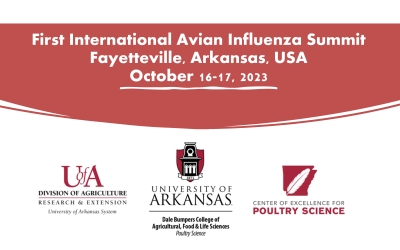Wild bird origin Influenza A subtype diversity and reassortment events during the HPAI H5N1 outbreak in Chile, 2022-2023
Authors: Pedro Jimenez-Bluhm, Soledad Ruiz, María Antonieta González, Camila Rojas, Pablo Galdames, Cristóbal Oyarzún, Cecilia Baumberger, Bridgett Shap, Shaoyuan Tan, Christopher Hamilton-West and Stacey Schultz-Cherry
GMPC TOP
2023.
vol. 3, Iss. 1
pp:0-20
Doi: https://doi.org/10.51585/gtop.2023.1.0023

Abstract:
Highly pathogenic avian influenza (HPAI) H5N1 viruses continue to pose a significant threat to animal and human health worldwide. Since the onset of the HPAI H5N1 outbreak in South America, our research group has been conducting environmental influenza A virus (IAV) surveillance in different wetlands throughout Chile to detect and characterize circulating IAV strains. Between November 2022 and June 2023, we collected and screened 3275 environmental samples for IAV by RT-qPCR targeting the M gene. Of these, 133 were IAV-positive (4.1%). Further testing by H5-specific RT-qPCR revealed that 14 (10.5%) of the positive samples corresponded to HPAI H5 2.3.4.4b, collected during the month of November (2), December (8 positives), January (1 positive), March (1 Positive) and June (1 positive). Samples obtained during spring (November and December) were obtained at the Lluta River estuary in the extreme north of Chile. Samples obtained during Summer (January and March) were obtained in Lluta and at Punta Arenas, located in the extreme South of Chile. The sample obtained in Winter (June) was obtained in Maipo, located in Central Chile. Sequence analysis of 6 fully sequenced H5N1 viruses revealed that all segments were closely related to other H5N1 2.3.4.4b viruses circulating at the time in South America. Interestingly, we also obtained several other subtypes of low pathogenic avian influenza viruses (LPAI) during the sampling period: H13N9, H13N8, H12N5, H8N4, H6N8, H6N5, H5N7, H4N6, H2N8 and H2N2. Phylogenetic analysis of these viruses revealed that locally circulating LPAI H12N5, H6N8, and H5N7 subtype viruses, additionally to 4 more viruses without subtype information, had reassorted with HPAI viruses in at least one of the PA and NP segments. The role that these novel reassortant viruses play in the ecology of IAV in Chile and their pathogenic potential is unknown; however, in light of these reassortment events, further surveillance is warranted to detect potentially novel HPAI H5Nx viruses circulating in wild birds in Chile that could have unknown pathogenic and transmission potential.
Keywords:
HPAI, LPAI, Wild-birds, Reassortment, Chile
Statistics:
Article Views: 948
PDF Download: 5